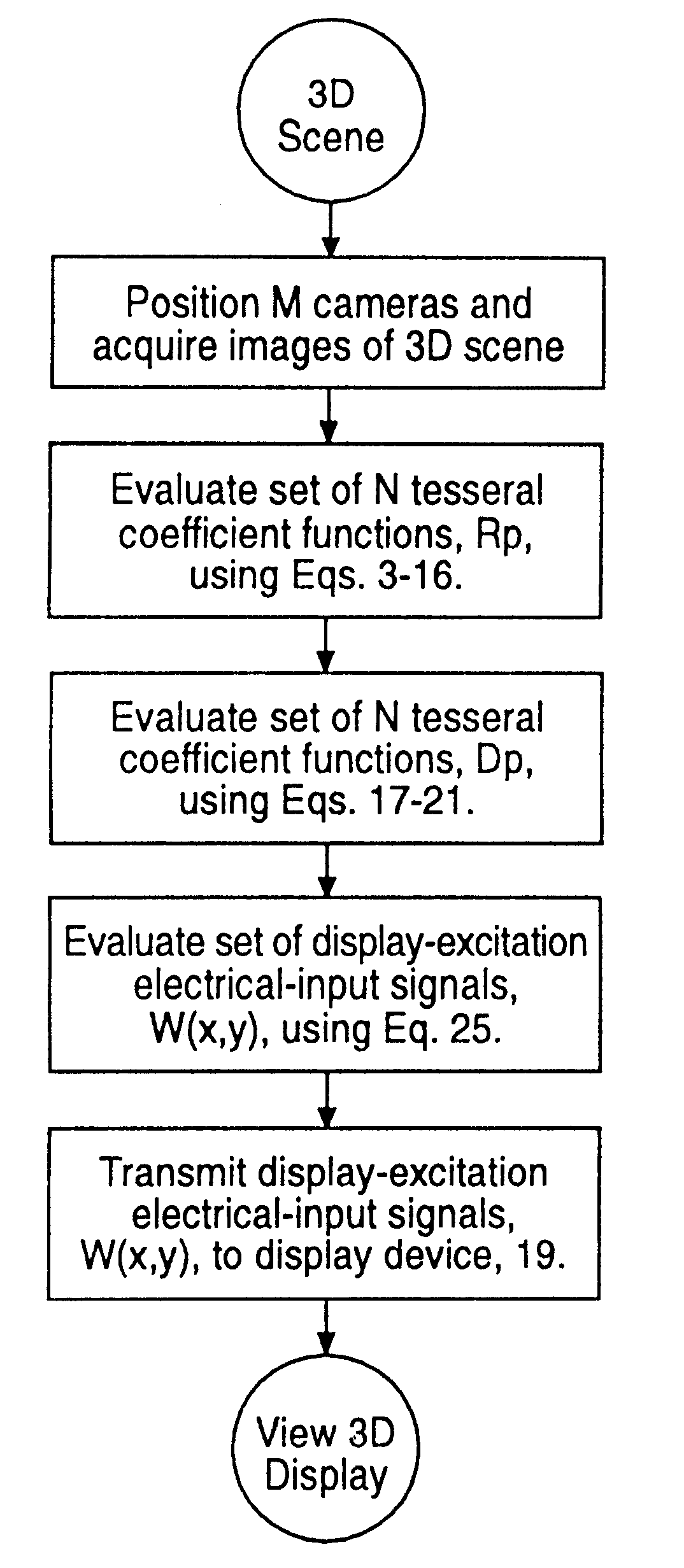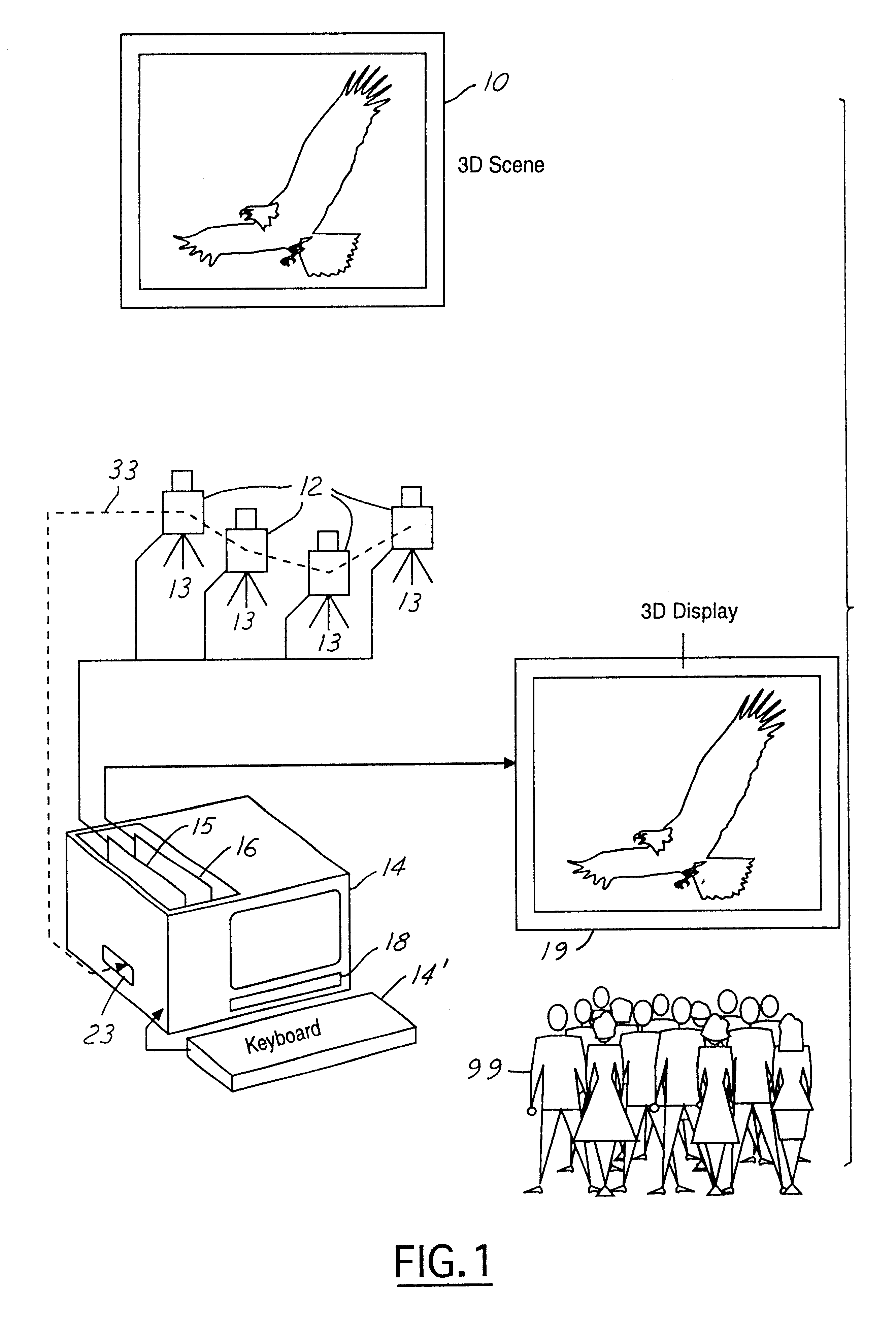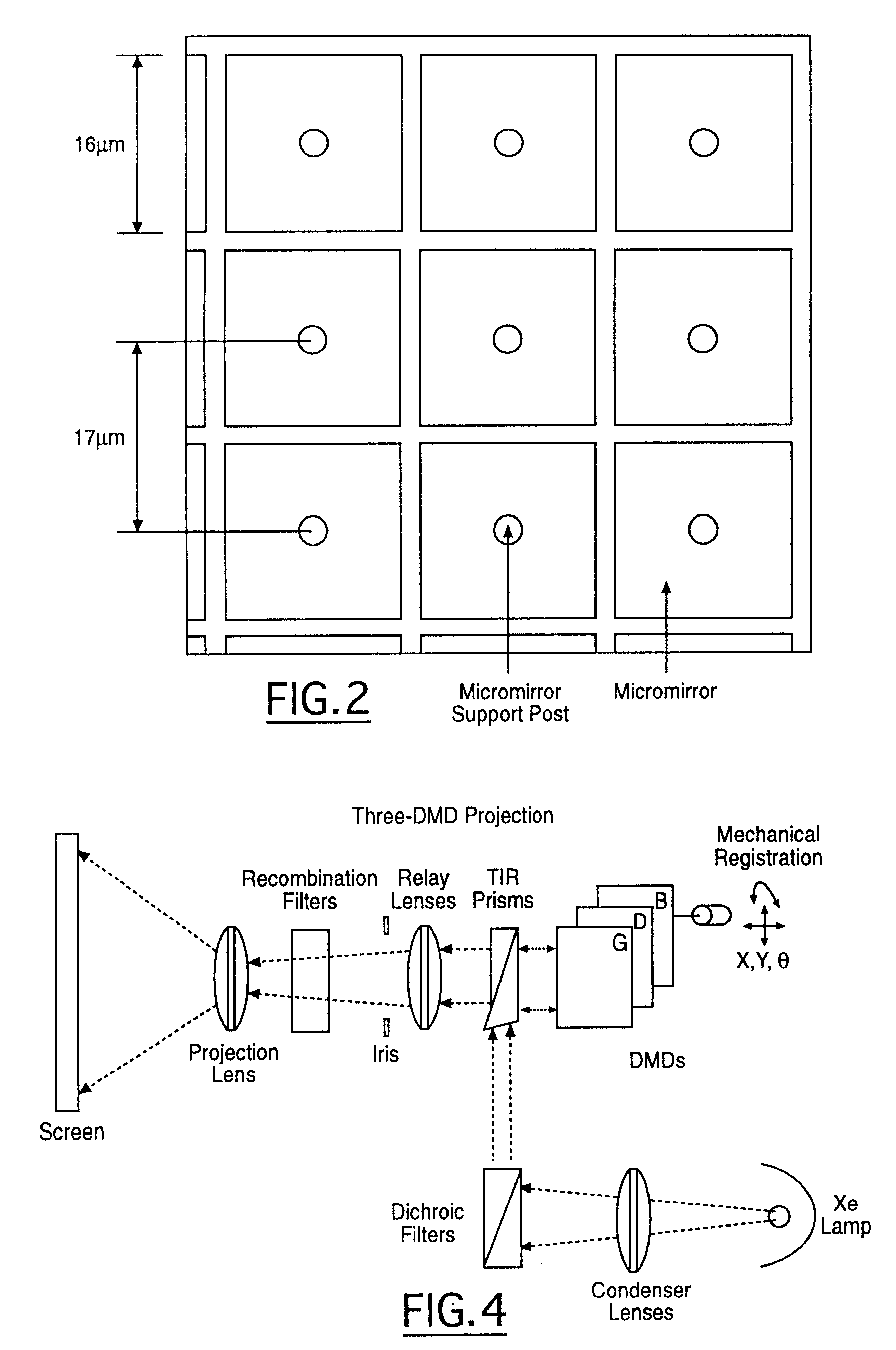Three-dimensional display system: apparatus and method
a three-dimensional display and apparatus technology, applied in the field of three-dimensional display, can solve the problems of poor three-dimensional display system production, not having a practical system which may be considered to offer all the capabilities necessary, and limiting the degree of success so far, so as to achieve efficient storage and display of images
- Summary
- Abstract
- Description
- Claims
- Application Information
AI Technical Summary
Benefits of technology
Problems solved by technology
Method used
Image
Examples
Embodiment Construction
specifically for this application. In one alternative embodiment, the functions R.sub.p (i,j), p=1, . . . , N, for each pixel i,j, as given for example in Eq. 11, are assumed to be known. Then, any planar view, m, of the original 3D scene can be reconstructed using the "forward solution," as given by Eq. 11, repeated here: ##EQU34##
In this equation, L.sub.m, is one pixel of the particular planar view (i.e., the m.sup.th view) desired of the 3D scene, while G.sub.mp represents a set of functions which are independent of the original 3D scene itself and thus can be computed a priori. The G.sub.mp are given by Eqs. 12-14, and include the specific position from which it is desired to view the 3D scene. Eq. 11 must be repeated for each pixel i,j, of the desired view. In a presently preferred embodiment, i=1, . . . ,480, and j=1, . . . , 512. Thus it should be understood that the entire 3D scene, i.e., the entire set of graphical information of the original scene, is represented by the se...
PUM
 Login to View More
Login to View More Abstract
Description
Claims
Application Information
 Login to View More
Login to View More - R&D
- Intellectual Property
- Life Sciences
- Materials
- Tech Scout
- Unparalleled Data Quality
- Higher Quality Content
- 60% Fewer Hallucinations
Browse by: Latest US Patents, China's latest patents, Technical Efficacy Thesaurus, Application Domain, Technology Topic, Popular Technical Reports.
© 2025 PatSnap. All rights reserved.Legal|Privacy policy|Modern Slavery Act Transparency Statement|Sitemap|About US| Contact US: help@patsnap.com



